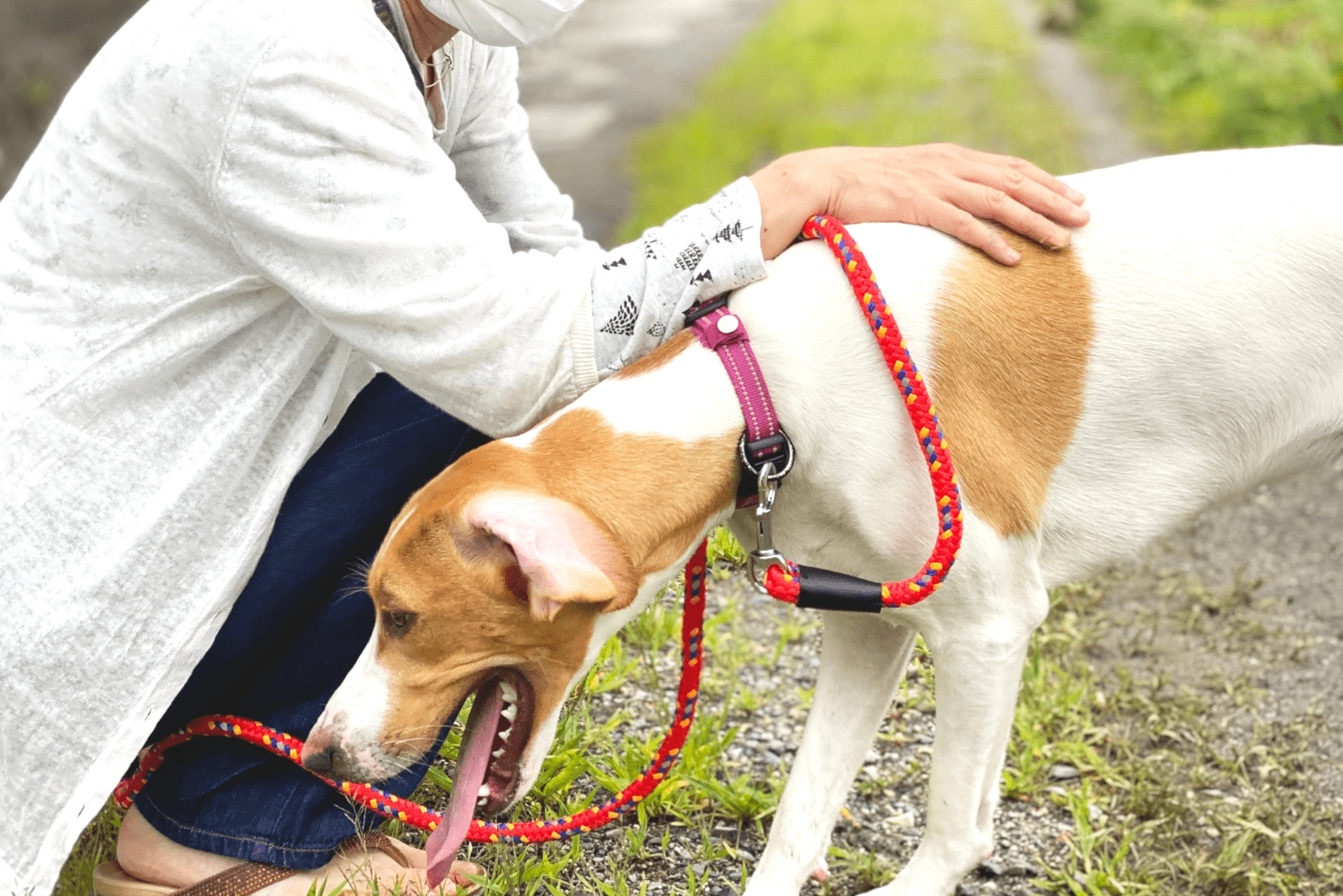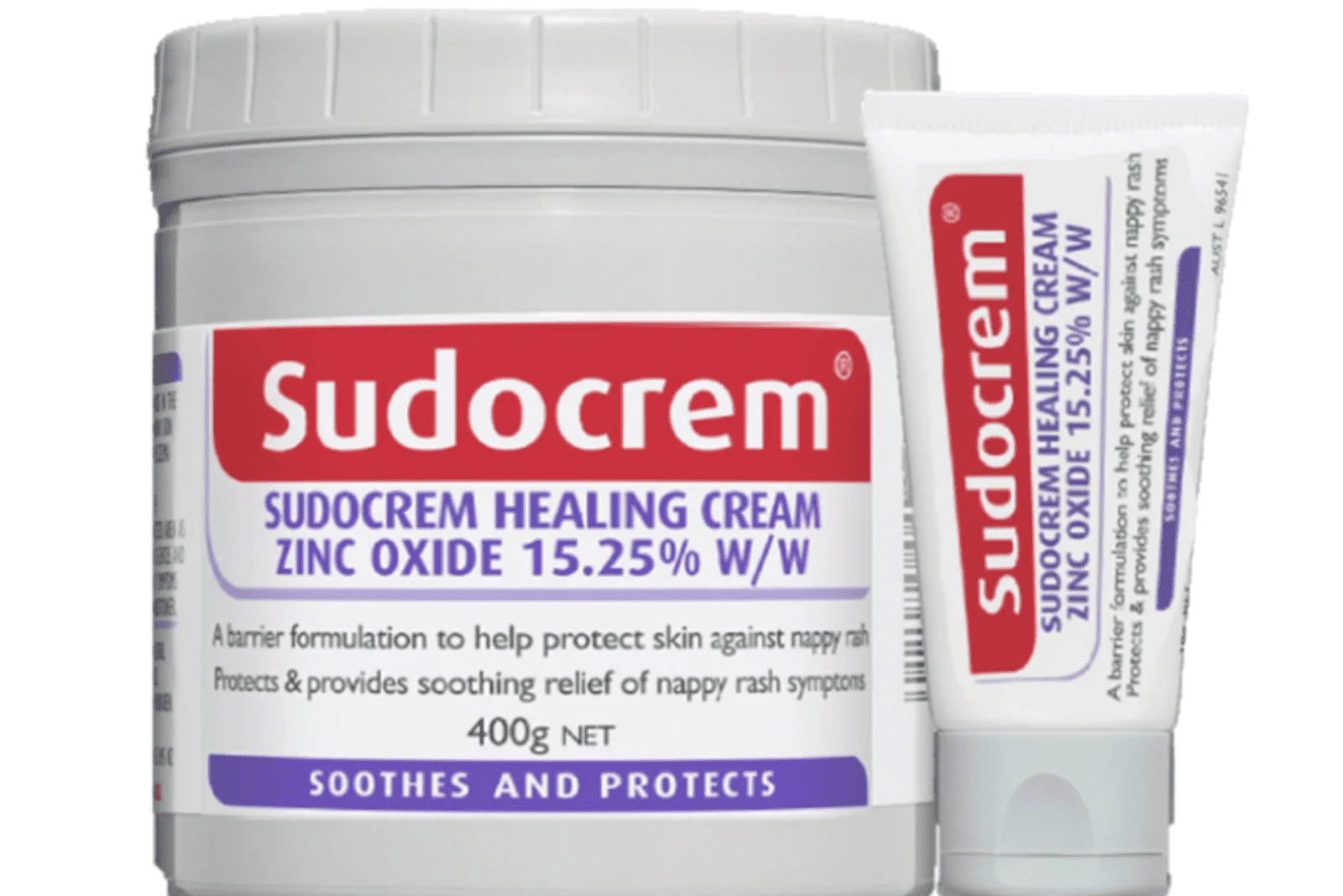Each of you surely has Sudocrem at home. We use it for various purposes, such as a solution for skin rashes, we apply it in order to rehabilitate acne or similar skin irritations, as well as for various skin injuries and eczema.
Sudocrem is a cream that protects the skin from infections, regenerates the skin, and cools the inflamed area. Also, this is an over-the-counter medicine, which means that you can buy it without having a prescription for it.
This cream has a very soothing effect on human skin. But what about dogs? Can we use Sudocrem for dogs?
If you suddenly noticed a skin change in your furry friend, you must have felt a little bit scared. You immediately started looking around the house for a product that could help your dog.
Sudocrem cream is what you found, and then you asked yourself: Can I use this cream to heal an irritated spot on my dog’s skin?
Let’s find out if you should use Sudocrem on your dog, and what the advantages or disadvantages of using this cream on dogs are.
Also, we will analyze the desirable amount of this cream we should use on our dogs and whether there are any side effects of using Sudocrem for dogs, as well.
What Is The Purpose Of Sudocrem For Dogs?
First, we will clarify one important thing. Sudocrem can be used on dogs and can be a very effective agent in relieving the pain or itching of the irritated part of the dog’s skin.
Any dog breed can have problems with sore skin, scrapes, open wounds on the body, or some other unpleasant skin conditions.
Sudocrem itself is not harmful to dogs. This, of course, refers to the effect of Sudocrem on your dog’s skin. If the dog licks the skin on which the cream has been applied, or even swallows Sudocrem, that is a completely different story.
This medicated cream was originally designed to be used to relieve nappy rash in babies. Over time, people realized that this cream could also be used for various other purposes, such as for dry skin, sunburn, cuts and so on.
Sudocrem can also be used on dogs for all those purposes. However, Sudocrem should not be applied to certain parts of the dog’s body, such as the lips and the area around the lips and nose, eyes and ears.
So, if for some reason your dog’s nose has turned pink, you should not apply Sudocrem to restore your dog’s normal nose color! Same goes for your dog’s pink paws!
What Is The Active Ingredient In Sudocrem For Dogs?

The first active ingredient in Sudocrem is Zinc Oxide.
This ingredient has soothing and protective properties, but, in larger quantities, it can be toxic to dogs. This refers to the situation where the dog swallows large amounts of Zinc Oxide. When applied to the skin, this ingredient is absolutely non-toxic.
Every dog owner, if he has decided to try to heal his dog’s injury or skin irritation with Sudocrem, should be with the dog after applying this cream and make sure that the dog does not lick the place where the cream was applied.
In addition to Zinc Oxide, Sudocrem also contains hypoallergenic Lanolin. Lanolin is a substance obtained from sheep’s wool and skin and is used in cosmetology as an emulsifier in various creams and ointments.
Thanks to this ingredient, Sudocrem has a soothing effect and reduces itching on the skin.
Furthermore, Sudocrem contains benzyl alcohol, which has anti-inflammatory properties and antibacterial properties. This ingredient is used in making products such as creams, lotions, and topical soaps.
When To Use Sudocrem For Dogs?
Sudocrem is equally popular in all parts of the world. Since it appeared, back in 1931, its popularity has not diminished. It is clear that people have found Sudocrem to be very useful and effective, and now we will find out why we should use Sudocrem on our dogs.
In which situations is Sudocrem useful for dogs?
1. Intensive Scratching In Dogs
All dogs scratch themselves sometimes, and this is not at all unusual for them. However, if you have checked your dog’s body, you have ensured that there are no fleas, and the dog is freshly bathed and brushed, it is obviously a case of skin irritation.
In these situations, you can apply Sudocrem to the parts of the body that your dog constantly scratches. The cream should soothe the irritated area, and significantly relieve your dog’s itchy skin. Wait to see if there are any changes and if the dog reacts to Sudocrem.
2. Smaller Cuts
Dogs are often injured during the most ordinary play or walk. This can be injuries in the form of minor cuts, which are almost imperceptible, or larger ones, which are significantly more serious.
If your dog has several minor cuts on its body, you can try to heal them with Sudocrem. If it is a major injury, you should not do anything yourself, but consult a veterinarian immediately.
3. As A Protection From Sun
Many dogs enjoy lying in the sun. They love to feel the warm rays of the sun on their bodies and you can see the genuine happiness on their faces while they are lit by the sun.
However, you should be careful when exposing your dog to the sun. Dogs can easily get sunburns. That’s why we should use sunscreen on our dogs.
If you are in a situation where you are just about to go out, it is a sunny day, but you do not have any sunscreen specifically for dogs at hand, Sudocrem can be of help to you.
This cream creates a barrier on the dog’s skin and thus protects it from the sun, humidity, and all other factors that could irritate it.
4. Flea Bites
Fleas are a nightmare for our dogs. When a flea bites a dog, the dog scratches nervously and the itching drives him crazy. Sudocrem can be used to help in this situation as well.
By applying this cream to the dog’s wound, the itching will decrease, and the dog will calm down a bit. Of course, this is not a long-term solution.
The fight against fleas in some dogs can take a long time. For the most effective solutions, it is best to seek the help of a veterinarian. In any case, Sudocrem is a quick and effective short-term solution for these types of dog skin problems!
5. Rectal Itching
If you saw your dog licking its butt for the first time, you might have thought that this was part of its grooming process. However, it soon became clear to you that the dog, in addition to licking its ass, is also constantly scratching itself.
It is clear that something has caused the irritation in this part of the dog’s body.
Various factors can cause this condition. Some of them are allergies, ulcers, bacterial infections, and parasitic infections. To make it easier for your dog, you can apply Sudocrem to the irritated area.
The cream will have a calming effect and will cool the inflamed area. However, it probably won’t solve your dog’s scratching problem in the long run.
Therefore, you should contact a veterinarian, who may suggest further steps, such as using antibiotics or adding certain supplements to your dog’s diet. Everything will depend on the exact cause of the rectal itch in the dog.
Are There Side Effects Of Using Sudocrem On Dogs?

It is true that Sudocrem is very useful for dogs and should not pose a danger to the health of our dogs. However, it is necessary to mention something very important. One of the main ingredients of this cream, Zinc Oxide, which as we mentioned earlier, is toxic to dogs.
“How can an ingredient used in creams be toxic at all?” you ask. Well, very simply – creams like Sudocrem are meant to be applied directly to the skin. A reasonable being, of course, will not try to lick or swallow a product that is meant to be applied to the skin.
But we all know that our dogs love to lick and chew things. This especially applies to situations like these, when they encounter something new for the first time. Most of them will immediately try to lick the place you smeared with Sudocrem.
If it comes to Sudocrem ingestion, it is possible that Zinc toxicosis in your dog will occur. If the dog has swallowed a large amount of this cream, it is even more at risk of poisoning.
The consequences of poisoning will depend on various factors, such as the general health of the dog, its age, and its size.
Some of the symptoms of poisoning can be diarrhea, vomiting, poor mobility, and jaundice. Jaundice can be seen on the dog’s teeth and gums. Read our dog gum color chart for more details on the desirable color of dogs’ gums.
Severe cases of zinc poisoning can even be life-threatening for dogs.
The truth is that Zinc toxicity will probably not be fatal to a dog, since it takes a dog to ingest a large amount of a Zinc-containing product to be life-threatening. But still, why would we risk it?
How To Use Sudocrem On Dogs?

We mentioned that you should not put Sudocrem on certain sensitive areas of your dog’s body. You can apply this cream to the dog’s paws, tail, belly, back, and legs.
When applying Sudocrem to your dog’s body, keep in mind that the cream will not be absorbed immediately, since this cream contains a water-repellent base.
Therefore, it would be a good idea to put a towel down for your dog to lie on, and then apply it to the affected areas. Soon the cream will be absorbed and your dog will be able to continue moving normally.
Be gentle when petting your dog’s body, as an injury or skin irritation may be painful. Also, do not use large quantities of this cream at once.
Sudocrem should only ever be applied in a thin layer on a dog’s irritated skin. Also, this cream should not be used regularly for dogs, only in some cases.
See Also: 18 Causes Of Red Paws On Dogs And How To Prevent Them
What To Use Instead Of Sudocrem?
As a multipurpose cream, Sudocrem can solve any skin problem your dog may have in the short term. However, we certainly do not recommend the long-term use of this product on dogs.
In today’s market, we can find everything we need for our pets. When you visit sites like Amazon, you’ll be inundated with any product you’ve been looking for, for your dog – from collars and leashes to toys.
Just as we have shampoos that are intended for our skin, there are also shampoos specialized for dogs and their sensitive skin. So, shampoos like Head & Shoulders can be used occasionally to help a dog with a dandruff problem, but you should definitely not use them regularly!
It is the same case with creams for injuries or skin irritations. Instead of Sudocrem, a better option would be to find an antiseptic healing cream that was invented specifically for dogs.
This way, you won’t have to worry about your dog being at risk of poisoning. Also, you will be able to apply the cream and go do your thing without having to watch over your dog. If you are not sure which cream to choose, it would be best to consult a veterinarian.
FAQs
Who First Developed Sudocrem?

Sudocrem was first developed by pharmacist Thomas Smith in 1931 in Dublin. In the first few years, Sudocrem was known as “Smith’s cream”.
During the 60s, mothers in Ireland saw the effectiveness of this cream for nappy rash in babies. In the 70s, this product became popular throughout the United Kingdom. In addition to diaper rash, people slowly began to use it for other skin problems as well.
To this day, Sudocrem is manufactured in Dublin.
What Does Sudocrem Do?
Sudocrem acts as an anti-inflammatory antiseptic, and at the same time stimulates skin regeneration. This cream is intended for the care of sensitive areas of the skin, so it is extremely gentle.
Its purpose is to protect and soothe red, chapped, or irritated skin. Sudocrem is effective for various skin conditions, such as sunburn, acne, eczema, diaper rash, and so on.
The proven formula of Sudocrem has been confirming its quality for many years. In addition to soothing inflamed skin, Sudocrem significantly helps in its healing.
The cream should be applied in as thin a layer as possible and massaged in circular motions. The cream should be completely absorbed in 10 to 15 minutes.
What Is The Recommended Age For Application?
Medicines, ointments, and creams usually have instructions stating the recommended age from when the product can be used.
Since Sudocrem was originally intended for babies who are still in diapers, we can say that there is no recommended age for using Sudocrem.
There is nothing more sensitive than a baby’s skin, therefore, this cream is gentle and not harmful. Also, it is completely safe for use and has a soothing and healing effect.
For this reason, we claim that it can also be used as first aid for a dog’s skin problems. Of course, it should be used only occasionally, and in appropriate quantities. And let’s not forget the most important thing – the supervision of the dog’s owner.
Final Words
Certain changes on our dogs’ skin are not unusual. Cuts, burns, sores, ulcers, allergies… Every dog owner has encountered at least one of these forms of skin changes in their pet. Therefore, using Sudocrem for dogs doesn’t sound like such a strange idea, does it?
This cream has a soothing effect on skin wounds and has been known for many years as an excellent aid for people. From today’s text, we learned that Sudocrem can be extremely useful for dogs as well.
This cream will heal the dog’s skin problem in the short term, calm it down, and is generally not toxic to dogs. However, this changes if the dog licks or swallows large amounts of Sudocrem.
Our final verdict would be that there is no valid reason against using Sudocrem for dogs. However, the use of this product on dogs should only be occasional. Even though there is only the slightest possible chance of poisoning, no dog owner should put their pet at unnecessary risk.
Also, today there are various products for dogs with a similar effect to Sudocrem, therefore, it is always better to choose the option that will be completely safe for the dog.
What can we conclude at the end? It would be good if you always have a small tub of Sudocrem at hand but be careful and always supervise your dog if you apply this cream to its skin!
Read Next:
• What Could Crusty Scabs Around Dog’s Mouth Mean? 9 Explanations
• Can I Walk My Dog After Cutting The Quick? Here’s What You Should Do
• What’s With That Tick Scab On Dog? Tick Removal 101













